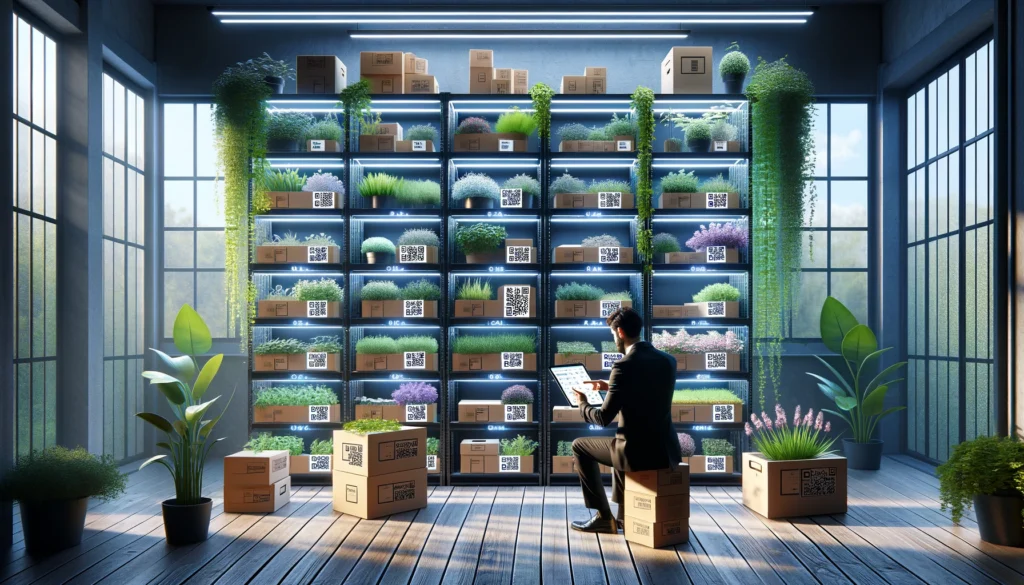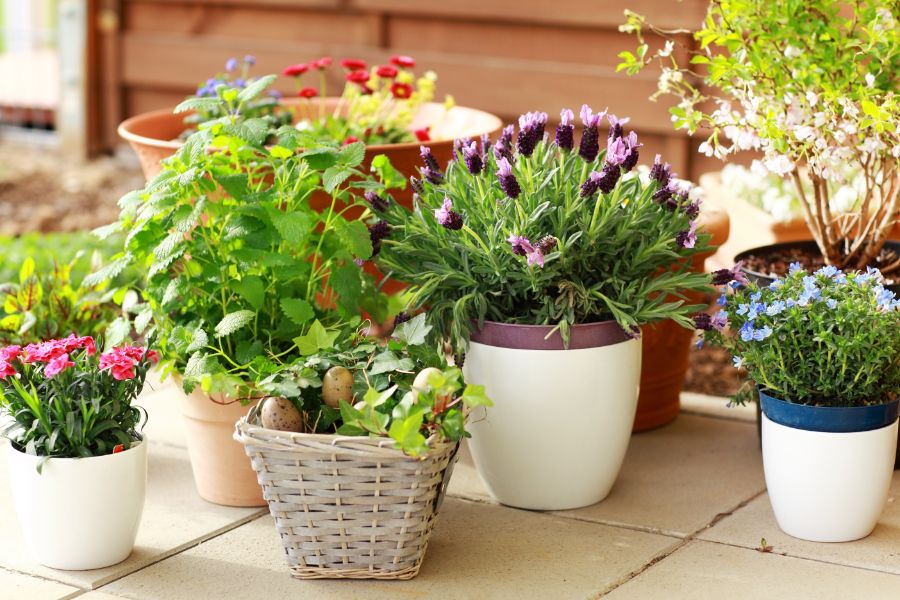In the bustling landscape of global commerce, understanding the nuanced preferences of different cultures can be the key to unlocking new avenues of success. In this article, we delve into the profound impact of cultural preferences on the wholesale market of artificial plants, shedding light on how our comprehensive understanding can benefit your business ventures.

1. Cultural Sensitivity: A Cornerstone of Wholesale Success
The wholesale industry operates on a foundation of meeting consumer demands efficiently and effectively. However, what constitutes ‘demand’ varies significantly across different cultural landscapes. For instance, while vibrant and exotic artificial plants might find favor in one market, another might prefer subdued and minimalist designs. Understanding these preferences is akin to wielding a compass in the vast ocean of international trade – it guides us to navigate the currents of consumer tastes with precision.
In Eastern cultures such as China and Japan, where harmony and balance are revered aesthetic principles, artificial plants that emulate the tranquility of nature often take precedence. Delicate cherry blossoms, elegant bonsai trees, and serene bamboo arrangements are favored for their ability to evoke a sense of serenity and Zen-like tranquility. These designs reflect the cultural reverence for nature and the desire to create harmonious living spaces imbued with a sense of calm and balance.
In contrast, Western cultures tend to gravitate towards artificial plants that exude elegance and sophistication. Lush greenery interspersed with vibrant blooms, such as roses, lilies, and hydrangeas, are popular choices for adding a touch of opulence to interior spaces. Grand floral arrangements and cascading ivy evoke the timeless allure of European gardens, appealing to Western consumers’ penchant for luxury and refinement.
In regions characterized by tropical climates, such as Southeast Asia and Latin America, artificial plants that capture the lushness and vibrancy of tropical flora are in high demand. Bold and exotic species like palm trees, orchids, and tropical ferns evoke the verdant landscapes of tropical paradises, infusing interior spaces with a sense of warmth, vitality, and tropical escapism. These designs resonate with consumers’ desire to bring a slice of paradise into their homes and businesses, regardless of geographical location.
In urban cosmopolitan centers like New York City and Tokyo, where space is at a premium and modern aesthetics reign supreme, artificial plants that embrace minimalist chic are coveted. Sleek and sculptural succulents, geometric terrariums, and minimalist foliage arrangements are favored for their clean lines, understated elegance, and ability to complement contemporary interior décor schemes. These designs reflect the cultural ethos of simplicity, functionality, and urban sophistication, appealing to consumers with a discerning eye for modern design trends.
2. Price Sensitivity and Value Perception
One of the defining characteristics of our artificial plants is their affordability without compromising on quality. In the wholesale arena, where profit margins hinge on competitive pricing, this attribute is invaluable. However, the perception of value is not solely determined by price tags but is deeply intertwined with cultural perceptions.
In Western cultures, where the mantra of “you get what you pay for” often prevails, consumers may associate higher price points with superior quality and craftsmanship. As such, artificially low prices may raise suspicions about the product’s durability and longevity. To appeal to Western consumers, wholesalers must strike a delicate balance between competitive pricing and perceived value, emphasizing the quality and durability of the products to justify the price points.
Conversely, in many Eastern cultures, where thriftiness and frugality are esteemed virtues, a bargain price tag may be perceived as a testament to the product’s accessibility and affordability rather than its quality. Here, wholesalers can leverage competitive pricing as a strategic advantage, positioning their offerings as cost-effective solutions without compromising on quality. Emphasizing the affordability and value proposition of the artificial plants can resonate positively with price-conscious consumers in Eastern markets.

3. The Tapestry of Styles: Adapting to Cultural Diversity
In cultures where ornate decorations are favored, such as in certain parts of the Middle East and South Asia, elaborate floral arrangements adorned with intricate detailing and vibrant colors resonate deeply with consumers. These opulent designs evoke a sense of grandeur and luxury, reflecting the cultural appreciation for lavish embellishments and elaborate craftsmanship.
Conversely, in regions where understated elegance reigns supreme, such as in Scandinavia and parts of Western Europe, sleek and modern designs take center stage. Minimalist succulents nestled in contemporary planters or geometric terrariums exude a sense of simplicity, refinement, and sophistication, aligning seamlessly with the minimalist aesthetic preferences prevalent in these cultures.
In Western cultures, where individualism and personal expression are celebrated, diverse range of styles caters to a myriad of aesthetic preferences. From classic floral arrangements evoking the timeless allure of English gardens to contemporary succulents embodying the modern ethos of urban living, your designs need to reflect the eclectic tastes and diverse cultural influences shaping Western consumer preferences.
In East Asian cultures, where reverence for nature and harmony is deeply ingrained, lifelike replicas of tropical flora resonate with consumers seeking to bring the beauty of the natural world into their homes and workplaces.
4. OEM Service: Tailoring Solutions to Cultural Specificities
In the ever-evolving landscape of international trade, customization is the linchpin of success. Our OEM (Original Equipment Manufacturer) service exemplifies our commitment to providing tailored solutions that cater to the specific needs and preferences of our clients.
In a world where consumer preferences are as diverse as the cultures they come from, offering standardized products simply won’t cut it. Wholesalers must be able to adapt and customize their offerings to meet the unique demands of different markets.
Our OEM service goes beyond mere customization; it’s about understanding the cultural specificities that shape consumer behavior and adapting our products accordingly. Whether it’s incorporating culturally significant motifs into our designs or fine-tuning product specifications to align with regional preferences, we work closely with our clients to deliver personalized solutions that resonate with their target audience.
In addition to design customization, our OEM service also allows us to fine-tune product specifications to align with regional preferences. This could include factors such as size, shape, and even material composition. For example, in regions where space is limited, we may offer smaller, more compact designs, while in regions with a preference for eco-friendly products, we may use sustainable materials in our manufacturing process.
Ultimately, our OEM service empowers our clients to carve out their niche in the global marketplace. By offering personalized solutions that cater to the specific needs and preferences of their target audience, they can differentiate themselves from competitors and build stronger connections with customers.

5. Cultural Signifiers: Symbolism and Significance
Plants have been revered throughout history for their symbolic meanings and spiritual significance. From ancient civilizations to modern societies, plants have played a central role in rituals, ceremonies, and daily life. By delving into the cultural significance of plants, wholesalers gain valuable insights into the beliefs, values, and traditions of different cultures, allowing them to tailor their product offerings to resonate with their target audience on a deeper level.
For example, in some Eastern cultures, certain plants are imbued with auspicious symbolism that holds profound significance in people’s lives. The lucky bamboo in Chinese culture symbolizes prosperity, longevity, and good fortune, making it a popular choice for gifts and decorations during festive occasions and special celebrations. Similarly, the sacred fig tree, or peepal tree, holds spiritual significance in Hinduism, Buddhism, and Jainism, representing wisdom, enlightenment, and immortality. By incorporating these culturally significant plants into your product offerings, you can enable your clients to tap into the rich tapestry of cultural meanings, fostering a sense of resonance and authenticity among their customers.
By aligning their product offerings with cultural symbolism and significance, wholesalers can foster a deeper connection with their target audience, transcending mere transactions to create meaningful experiences. When consumers see their cultural heritage reflected in the products they purchase, they feel a sense of validation and connection, strengthening their bond with the brand and fostering long-term relationships.
6. Seasonal Variations: Navigating Festive Traditions
In cultures around the world, festivals and seasonal celebrations serve as occasions for joy, unity, and cultural expression. These events often hold deep-rooted significance, embodying traditions passed down through generations and imbuing communities with a sense of identity and belonging. From religious observances to secular holidays, festivals mark the passage of time and provide opportunities for people to come together in celebration.
As wholesalers of artificial plants, we recognize the impact that festivals and seasonal celebrations have on consumer demand. For example, during the Chinese New Year, which typically falls in late January or early February, there is a heightened demand for decorative items that symbolize prosperity, good luck, and happiness. Red and gold-themed decorations, as well as plants such as lucky bamboo and tangerine trees, are particularly popular during this time.
Similarly, in Western cultures, the festive season from late November to December sees a surge in demand for holiday-themed artificial plants. Christmas trees, wreaths, garlands, and poinsettias are among the top-selling items as people decorate their homes and businesses to celebrate Christmas and usher in the new year.
7. Eco-conscious Consumers: Bridging Cultural Perspectives
In an era marked by growing environmental awareness, eco-consciousness transcends cultural boundaries, emerging as a universal concern. As manufacturers of artificial plants, we recognize the importance of sustainability and eco-friendliness in our production processes.
Across the globe, consumers are increasingly prioritizing sustainability in their purchasing decisions, seeking products and brands that minimize environmental impact and promote responsible consumption. This shift is driven by a growing awareness of pressing environmental issues such as climate change, deforestation, and plastic pollution, as well as a desire to preserve and protect the planet for future generations.

As manufacturers of artificial plants, we are committed to reducing our environmental footprint and promoting sustainable practices throughout our supply chain. This includes sourcing materials from responsibly managed sources, minimizing waste and energy consumption during production, and prioritizing the use of recyclable and biodegradable materials wherever possible.
While eco-consciousness may have originated in Western markets, it has since transcended cultural boundaries to become a global phenomenon. In emerging economies, where rapid industrialization and urbanization have led to environmental degradation and resource depletion, consumers are increasingly embracing sustainability as a means of addressing these challenges and promoting a more balanced and equitable approach to development.
By providing information about the environmental benefits of artificial plants, such as water conservation, reduced pesticide use, and long-term durability, you can inspire consumers to make informed choices that align with their values and contribute to positive environmental outcomes.
8. Cross-cultural Collaboration: Harnessing Diversity for Innovation
In today’s interconnected world, cross-cultural collaboration presents boundless opportunities for innovation and growth. By fostering partnerships with designers, artists, and influencers from diverse cultural backgrounds, you can enrich your product offerings with fresh perspectives and creative insights.
The fusion of different cultural perspectives breeds innovation. By bringing together individuals from various cultural backgrounds, you can create a melting pot of ideas, experiences, and viewpoints that spark creativity and drive innovation forward. Cross-cultural collaboration allows us to challenge conventional thinking, break down barriers, and explore new possibilities that resonate with consumers on a global scale.
Through cross-cultural collaboration, you can infuse your product offerings with a rich tapestry of cultural influences, from traditional motifs and craftsmanship to contemporary trends and design aesthetics. By incorporating elements from diverse cultures, you can offer products that resonate with consumers worldwide, appealing to their unique tastes, preferences, and cultural sensibilities.
Cross-cultural collaboration extends beyond mere product development—it cultivates a dynamic ecosystem that transcends geographical boundaries. By fostering partnerships with designers, artists, and influencers from around the world, you can create a network of creative minds united by a shared passion for innovation and cultural exchange. Through the exchange of ideas, knowledge, and experiences, you can cultivate a vibrant community that fuels creativity, inspires collaboration, and drives growth.

In the wholesale market of artificial plants, cultural preferences wield significant influence, shaping consumer behaviors and market dynamics. By embracing cultural sensitivity as a guiding principle, you can not only acknowledge the diversity of your clientele but leverage it as a source of competitive advantage. As you embark on your wholesale ventures, armed with a nuanced understanding of cultural preferences and backed by our expertise and comprehensive product offerings, navigate the waters of international trade with confidence, knowing that success awaits those who adapt and evolve with the changing tides of cultural diversity.


